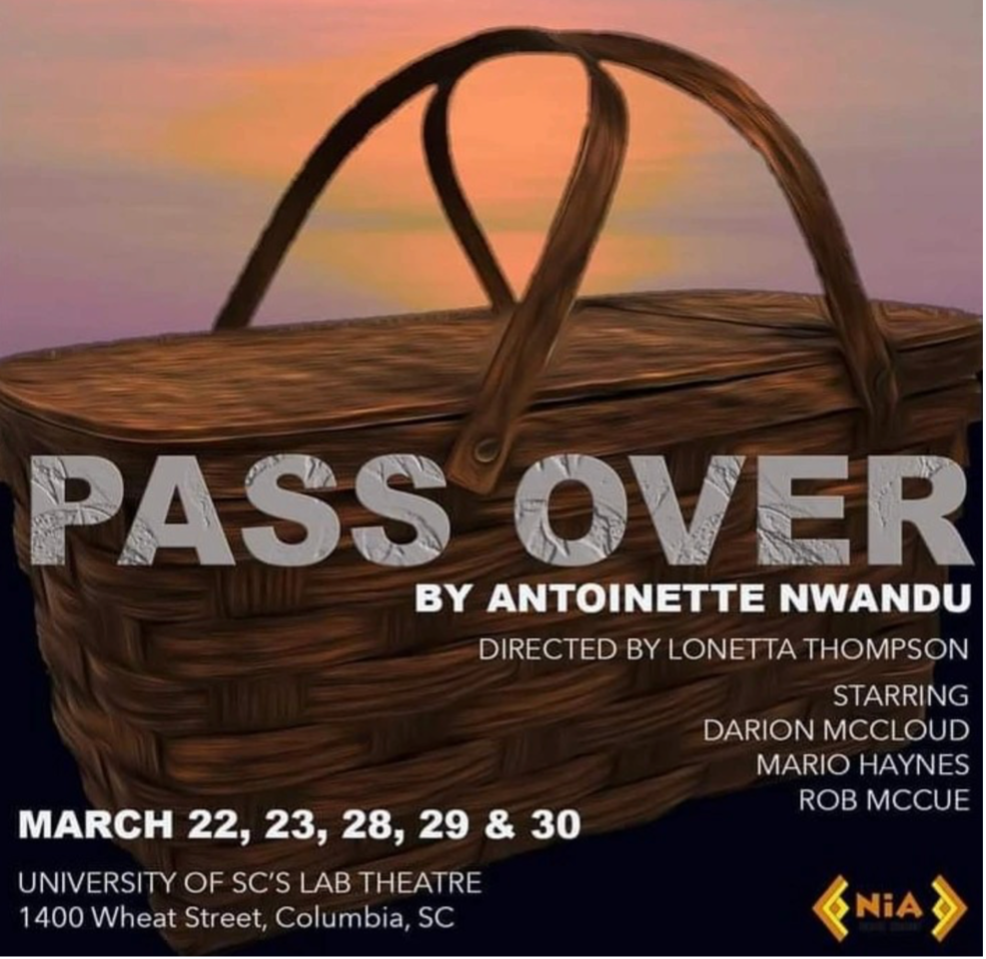by Cindi Boiter
Before attending Friday night’s production of Elton John and Tim Rice’s Aida at Trustus Theatre, I stopped by Ron Hagel’s new Gemini Studio complex to do my part in celebrating the work this talented collection of visual artists has created. I met an artist there who had already seen the show and they shared that it was so good that the audience had given an actual standing ovation after the end of the first act! I automatically assumed this was probably the result of a group of friends or family attending the musical and enthusiastically supporting their favorite cast member. Then I saw the show for myself and found myself on my feet, too, after the first act’s dramatic closing song, The Gods Love Nubia. That said, there were many times during this performance when I was tempted to stand at my seat, clap, cheer, whoop, and maybe even dance. The performance deserved this kind of enthusiastic response, and more.
The musical Aida, written by Elton John and Tim Rice, premiered on Broadway in March of 2000 and ran through September 2004, winning four of the five Tonys for which it was nominated. Based on Verdi’s opera of the same name, Aida is set in Egypt and tells the story of the Nubian princess, Aida, held captive by a sympathetic Egyptian general named Radames. Though their beloved nations are at war, Aida and Radames fall in love, even though Radames is engaged to marry the Egyptian princess, Amneris, a political move encouraged by his father, Zoser. The reconciliation of this love triangle is a story of love, devotion, social and familial expectations, and the challenge we all face to live an authentic life and be true to one’s own sense of right and wrong. It is as beautiful as it is tragic.
It is difficult to determine where the magic of the Trustus production of Aida came from. Director Jessica Fichter placed it squarely on the performance of the players, while Patrick Dodds, in a lead role as Radames, named Fichter as the catalyst. Both are right.
The magic became evident early in the performance when Amneris, played by rising USC senior Rachel Vanek, gave us the song Every Story is a Love Story, followed by Radames’ stunning Fortune Favors the Brave sung by Dodds, and the equally stunning opening number from Aida, played by Rayanna Briggs, The Past is Another Land. For this reviewer, the magic was in the music and how well the truly challenging numbers were executed. Vanek, Briggs, and so many other cast members were refreshingly new to me, but I’ve watched Dodds on the stage for more than a decade, I’m sure, and I had no idea his vocal talents could rise so successfully to the requirements of this role. Like Vanek and Briggs, Dodds was also able to merge the music with the demonstrative requirements of the role almost effortlessly, each bringing their own grace notes to the parts. Vanek, for example, helped us see how complicated her character was while at times providing comic relief that gave hints of Jennifer Coolidge. Briggs, originally from Columbia though now successfully pursuing opportunities that extend to film and TV, was, simply said, amazing, opening the hearts of the audience and crawling in to live there awhile.
These three lead actors and their unique and highly professional performances were clearly enough to carry the show, had they needed to. But they were not. In the role of the wily Nubian servant Mereb, Samaj Whitener was outstanding vocally, bringing an endearing quality to the role. Trustus veteran Kristin Claiborne in the role of Nubian enslaved woman Nehebka, gives a powerful and beautiful performance. Chris Cockrell, as Radames’ scheming father Zoser, similarly delivers the goods in his solo numbers, bringing elements of rock star to his performance. As Pharoah, Columbia theatre icon Hunter Boyle was stately and authoritative as well as inherently aware of his imminent fate. And as Aida’s father Amonasro, Joseph Scott exhibited powerful dignity in the face of despair.
With first-rate choreography by Terrance Henderson, musical direction by a partnership between Amanda Hines Wrona and Ayush Joshi, and scenic, lighting, and costume design by Jim Hunter, Marc Hurst, and Rachel Turner, respectively, and a dozen-strong ensemble, the Trustus production of Aida checks all the boxes for a regional theatre block buster and it is not-to-be-missed. Not only immensely entertaining, the story of Aida reminds us that the measure of a person in power is how they use that power. Aida succeeds on all accounts.
Elton John and Tim Rise’s Aida runs through July 26 at Trustus Theatre. Visit Trustus.org for tickets and more information.


























